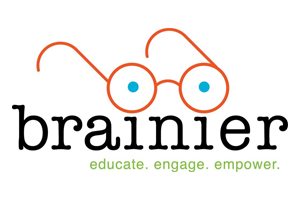As many organizations have now established precedent for hybrid and remote work, focus has turned to employee engagement opportunities and retention. Gallup’s most recent “State of the Global Workplace” report shows that while engagement is up globally to 23%, some regions are still at or below 15% engaged. At the same time, LinkedIn Learning’s 2023 Workplace Learning report found that the No. 1 way organizations are working to improve retention is by “providing learning opportunities.”
The degree to which employees feel connected to an organization’s purpose and vision is evolving. Along with this, new employees are expecting investments in their own skill growth that will pay immediate dividends. Increasing engagement and satisfying the desire for continuous learning and skill building are now priorities. With limited budget capacity and attention being drawn to competing priorities, how can a learning function target these needs? The answer may be found in the resource a majority of large organizations have already invested in: the learning management system (LMS).
The LMS as a Partner
One of the first enterprise-level resources that a new employee will engage with is the LMS. While many view this initial interaction as a series of “check-the-box” activities, the LMS can serve as a window to organizational culture. An LMS should not be viewed simply as a “welcome” tool facilitating compliance and onboarding activities, but rather as a partner — a continuous presence throughout the employee lifecycle.
All new hire eyes are on the LMS for a period of time, which allows the opportunity to incorporate specific leader messaging toward corporate values. Included in this might be demonstration of how the work that we do can run in parallel to both targeted goals, and the outward expression of what it means to be a member of the organization. The seed of engagement is planted here. The message can then shift to the importance of continuous personal development and skill growth and express how capitalizing on such growth can tie back to those corporate values. Essentially, leadership and learning and development (L&D) are working together to establish and convey the idea that we are investing in you, so that you may invest in us.
Those that can visualize the importance of their contributions into larger organizational goals may be more inclined to seek new ways to grow themselves and maintain that alignment. The key variable here, however, is the degree of buy-in from leadership toward support for a true learning culture. If it can be acknowledged that L&D has a seat at the table regarding strategy and overarching goals, then the LMS is more likely to be viewed as that partner by which leadership can convey new directives and continue to maintain momentum. As long as engagement and continuous learning are priorities for the organization, then the LMS will continue to service several aspects of the employee experience.
To the extent possible, personalization of the LMS through artificial intelligence and/or machine learning will also help strengthen the employee connection being established. Job architecture or skill mapping initiatives offer forward-thinking employees opportunities to visualize various career paths over time. If budgets allow, professional skills learning content can be incorporated directly into the LMS or via a learning experience platform overlay. This can allow for the automated promotion or recommendation of curated content around prescribed or self-selected skills matching a desired employee driven target.
Effectively, the LMS can support the employee’s continuous learning journey with on demand, just-in-time learning resources, including (but not limited to) content aligned to the company’s vision and objectives. In turn, this allows for a more impactful employee experience because it proves that the organization has a commitment to employees’ growth and development.
Engaging Talent: L&D’s Role
As learning leaders, how might we be able to influence continuous growth and engagement? A critical component is conveying the idea that the LMS should be utilized throughout the employee lifecycle. This can be accomplished by partnering with talent management professionals and nurturing relationships that L&D has throughout the organization, along with gathering feedback from the business on priorities in the near and long term. Promote the LMS to these groups for not only managing internal training in a traditional sense, but also for communicating change management initiatives, developing leadership training pathways, and otherwise establish the idea of the LMS as a one-stop-shop for both learning and employee engagement.
Efforts to champion skill development should be developed and managed apart from any specific business initiative as well. Again, as capacity and maturity of the LMS will allow, consider developing a cadence of skill-building offerings, by way of integrated virtual sessions as an example. Broad-based introductions to new concepts can vary from workshops on topics such as presentation skills, to wellbeing and work-life integration, with participation managed through the LMS. Optional development experiences can be incentivized with cost-effective methods like individual recognition, such as badges, to further drive engagement.
The manager and direct report relationship may also be targeted using the LMS as a resource to engage employees and build skills. With suggestions from talent management professionals, managers may be trained to effectively speak to the value and capabilities of an LMS in relation to their employees’ career development and trajectory. They can be encouraged to walk through the LMS with their direct reports, identifying key skills-based training or learning pathways based on a growth trajectory or other areas of interest that the employee has expressed. Key to this of course is allowing or even specifically dedicating time for the employee to engage in their specific learning plan(s). Additionally, as the employee progresses in their learning, regular check-ins and follow-ups with their manager would allow for potential opportunities to advance along the employee’s desired path, as feasible, and celebrate milestones.
Final Considerations
Envisioning the LMS as a partner in the employee experience may seem simple in concept, but effort must be undertaken by the L&D function. Awareness should be intertwined with specific activities and learning initiatives. However, there must also be an understanding that the capacity for learning and growth may be limited at times. Don’t be disappointed if a particular initiative doesn’t achieve the desired outcome. It may be best to pick and choose moments for different learning promotions, based on the calendar year of priorities in the organization. Keep working with your aligned stakeholders, gain buy-in from senior leadership, and you will find the best fits for visibility. What is important is to keep the LMS fresh, optimized and readily available for those moments when strategy aligns.
There is a unique opportunity to drive engagement and then maintain momentum at the outset of the employee experience. New habits can be encouraged and developed, and in the end, the Learning function can most certainly help to achieve an environment of continuous learning, and influence that desired level of engagement, via the LMS.




